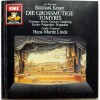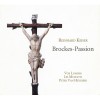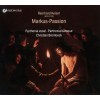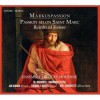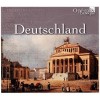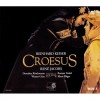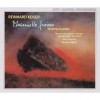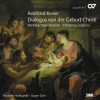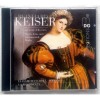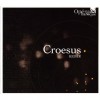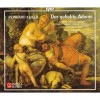传记
Reinhard Keiser (9 January 1674 – 12 September 1739) was a popular German opera composer based in Hamburg. He wrote over a hundred operas. Johann Adolph Scheibe (writing in 1745) considered him an equal to Johann Kuhnau, George Frideric Handel and Georg Philipp Telemann (also associated with the Hamburg Opera), but his work was largely forgotten for many decades.
Keiser was born in Teuchern (in present Saxony-Anhalt), son of the organist and teacher Gottfried Keiser (born about 1650), and educated by other organists in the town and then from age eleven at the Thomasschule in Leipzig, where his teachers included Johann Schelle and Johann Kuhnau, direct predecessors of Johann Sebastian Bach.
In 1694, he became court-composer to the duke of Brunswick-Wolfenbüttel, though he had probably come to the court already as early as 1692 to study its renowned operas, which had been going on since 1691, when the city had built a 1,200-seat opera-house. Keiser put on his first opera Procris und Cephalus there and, the same year, his opera Basilius was put on at Hamburg and, as the musicologist Johann Mattheson noted, "received with great success and applause."
This was a fruitful period for him - composing not only operas, but arias, duets, cantatas, sérénades, church music and big oratorios, background music - all for the city's use.
About 1697 he settled permanently in Hamburg, and became the chief composer at the highly renowned Gänsemarktoper (now rebuilt as the Hamburg State Opera) in Hamburg from 1697 to 1717; however he was actually first the director in 1702, and was not at various times from then to 1717, almost each time due to political instabilities.[1] From 1703 to 1709, Keiser changed the opera house from being a public institution to a commercial venture with two to three performances a week, in contrast to the opera houses intended for the nobility.
He helped transition opera from the mid-baroque idea of it, to the late-baroque idea of it. He not only did that, but even introduced a more varied type of aria into his operas, with more passive arias, and also faster arias being introduced into his bilinugal and non-bilinugal operas all by the 1703-04 season, with his five-star works, Nebukadnezar, and Salomon.
Early in 1704, when he was conducting the operas Nebukadnezar and Salomon in Hamburg, the season had to be unexpectedly concluded, for reasons most likely related to government affairs. He went to Brunswick, and afterward Weissenfels, to reconnect with areas in which he was previously active. He ended up coming out with a masterpiece, Almira, at Weissenfels, in July. He stayed there for a while, spending many holidays there, eventually heading back to Hamburg shortly after Easter in 1705, to produce a comeback to Händel's Nero, produced in February 1705.[2]
Keiser would have to face Händel again, but this time he would be at home, and Händel had switched to the phonetic Italian version of his name, Georgio Friderico Hendel. Hendel would put on what was planned as a double opera, but was in fact two, Florindo, and Daphne; he did that in January 1708, coming back from Italy. Keiser would counter that by eventually coming out with La forza dell'amore, oder, Die von Paris entführte Helena and Desiderius, König der Langobarden in the 1708-09 season, not as the theater's manager, but as someone responding to political insecurities causing the opera company to be disorderly. Keiser worked in the background.[3]
Keiser would continue as the director probably when things got more stable in the city, maybe in 1710, and he advanced in composing, coming with his own passion music in 1712, which Hendel would readily challenge in 1716.
In 1718, with the Hamburg Opera defunct, he left Hamburg to seek other employment, going to Thuringia and then Stuttgart. From this period three manuscripts of trio sonatas for flute, violin and basso continuo survive. During the summer of 1721, he returned to Hamburg, but only a few weeks later made a rapid exit to Copenhagen with a Hamburg opera troop, probably because of the growing influence of Georg Philipp Telemann, engaged by the city magistrate in Keiser's absence. Between 1721 and 1727, Keiser traveled back and forth between Hamburg and Copenhagen, receiving the title of Master of the Danish Royal Chapel.
After the dissolution of the opera troop, Keiser returned once more to Hamburg, but changes in its operation made repeating past success difficult. Three operas from the period between 1722 and 1734 survive. Personal relations with Telemann remained good, with Telemann programming several productions of Keiser's operas.
In 1728 he became the St. Mary's Cathedral precentor of Hamburg (succeeding Johann Mattheson to the post), and wrote largely church music there until his death in 1739.
In an obituary, his colleague Johann Mattheson described him as "the greatest opera composer in the world".







